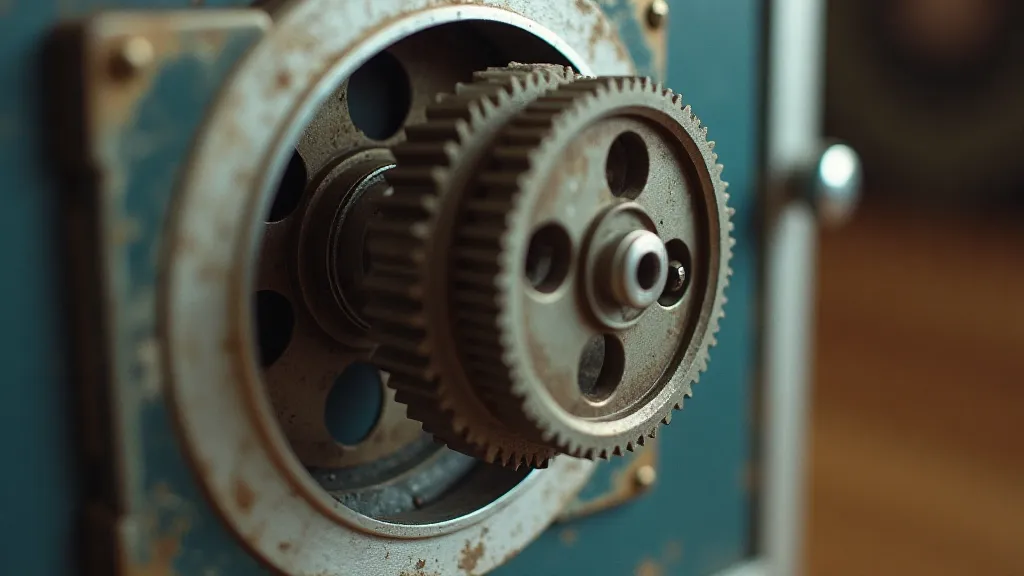A Symphony of Gears: Understanding the View-Master's Mechanical Soul
There’s a particular charm to holding something in your hands that whispers stories of a bygone era. It’s not merely an object; it’s a time capsule, a portal to childhood wonder. For me, that feeling is profoundly embodied by the View-Master. Not just the reels, though they are certainly captivating, but the View-Master itself - the sturdy, mechanical device that brings those miniature worlds to life. It's more than a toy; it's a testament to ingenious engineering, a delicate dance of gears and levers designed to transport you somewhere magical.
My own fascination began with my grandfather’s View-Master. It wasn't a pristine, showroom-perfect specimen; it was well-loved, showing the wear and tear of countless adventures. The leatherette was cracked in places, the chrome plating faded, but it worked. And as a young boy, those clicks and whirs were as enchanting as the panoramic images flickering before my eyes. It sparked a lifelong appreciation for not just collecting, but for understanding *how* things work – a desire to peek behind the curtain of wonder.

The Engineering Marvel: More Than Just Pictures
The View-Master’s beauty lies not just in the vividly colored images, but in the brilliance of its mechanical design. Developed in the 1930s by Sawyer’s View-Master View Company, it wasn't just about displaying pictures; it was about creating an immersive experience. The core mechanism is surprisingly simple, yet remarkably effective. A series of synchronized gears, powered by a hand crank, advances the reel, presenting a new image with each rotation. This wasn’t just about convenience; it was about creating a sense of movement, of progress, of exploration.
The lever system is equally ingenious. It allows the viewer to rotate the reel manually, providing a degree of control over the viewing experience. The quality of the materials – the sturdy metal casing, the precisely cut gears, the durable leatherette – all speak to a commitment to craftsmanship that’s often lacking in modern toys. The original View-Masters were designed to last, and many of them have stood the test of time, becoming cherished heirlooms passed down through generations.
Common Mechanical Issues and Repair Techniques
Of course, time and handling take their toll. Many vintage View-Masters suffer from a variety of mechanical issues. Here are some of the most common problems, along with potential repair techniques. It's important to approach these repairs with caution and a healthy dose of patience.
Stiff or Frozen Gears: This is perhaps the most frequent complaint. Years of inactivity can cause the gears to seize up due to dried lubricant and accumulated dust. A careful application of a dedicated hobbyist lubricant (avoiding harsh solvents like WD-40) can often loosen them up. Gently working the crank back and forth while applying the lubricant is key. For more stubborn cases, disassembly might be necessary, allowing for thorough cleaning and re-lubrication.
Worn or Broken Crank: The crank is a crucial element; a broken one renders the device unusable. Replacements can sometimes be found online, but often require careful adaptation and modification. In some cases, a skilled machinist might be able to fabricate a custom crank.
Loose or Damaged Lever: The lever mechanism, responsible for reel rotation, can also become loose or damaged. Tightening screws, cleaning pivot points, and, in extreme cases, replacing the lever are potential solutions.
Cracked or Broken Casing: While primarily aesthetic, cracks in the casing can compromise the structural integrity of the View-Master. Careful gluing with a suitable adhesive (often epoxy) can repair minor cracks. More severe damage may require professional restoration.

Beyond the Mechanics: The Collector's Perspective
Restoring a View-Master isn't just about fixing a broken toy; it’s about preserving a piece of history. It's about appreciating the ingenuity and craftsmanship of a bygone era. For collectors, a fully functional View-Master is a valuable asset, but the story behind it, the provenance, the condition, all contribute to its overall desirability.
Many collectors specialize in particular themes: specific View-Master reel sets (national parks, Disney characters, historical landmarks), or even particular models of View-Masters. The rarer the set or model, the more sought-after it becomes. However, for me, the true value lies not in the monetary worth, but in the connection to the past, the sense of wonder, the appreciation for the mechanical brilliance that brings those miniature worlds to life.
Preserving the Magic: A Gentle Approach
When undertaking restoration work, a gentle approach is paramount. Avoid harsh chemicals and abrasive tools. Patience is your greatest asset. Remember, you're not just repairing an object; you’re preserving a legacy. Document your work, take pictures, and share your experiences with other collectors. The more we share, the better we can understand and appreciate these remarkable machines.
Consider this: each click of the crank, each rotation of the reel, is a testament to the enduring power of simple mechanics and imaginative storytelling. By understanding the “mechanical soul” of the View-Master, we gain a deeper appreciation for its place in our cultural history, and contribute to ensuring that the magic continues for generations to come.






